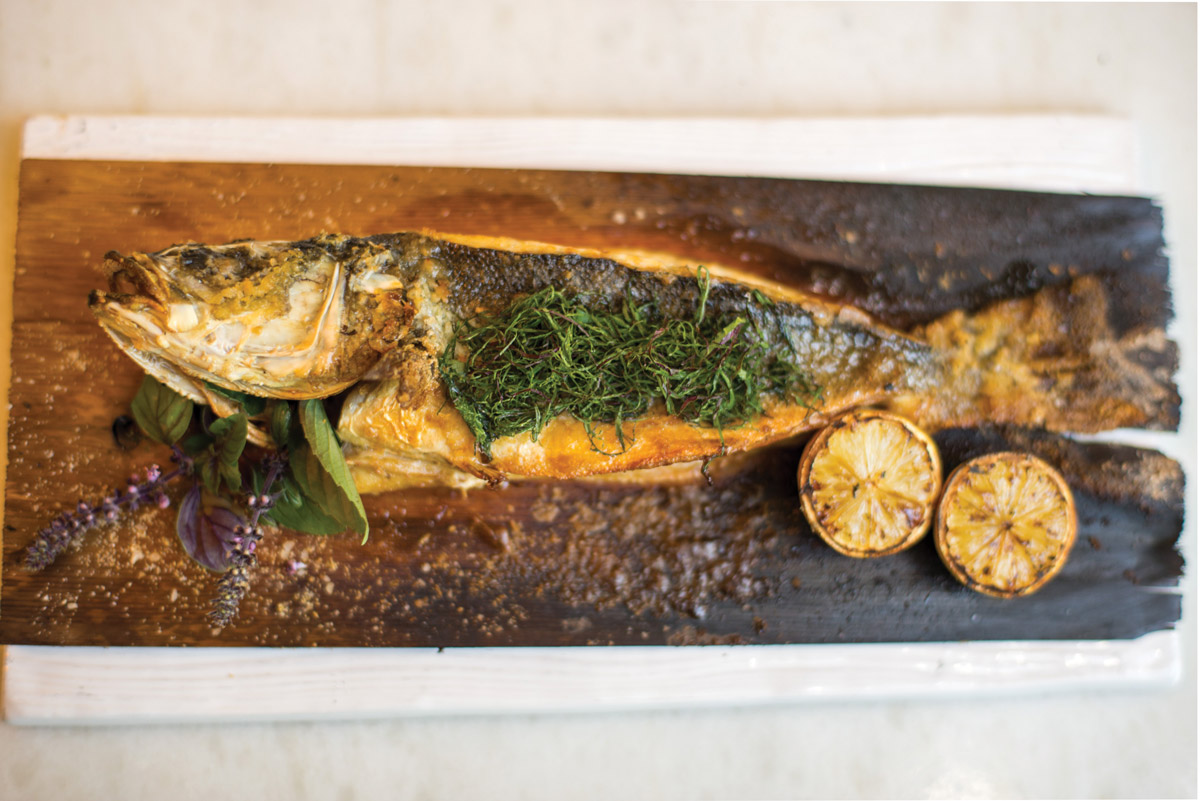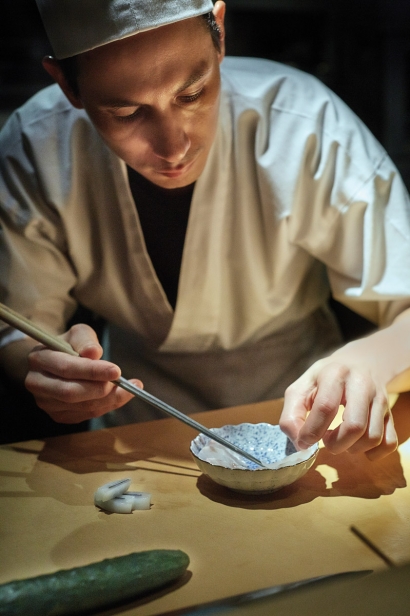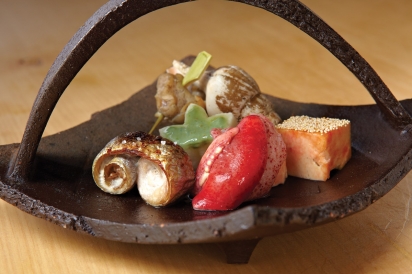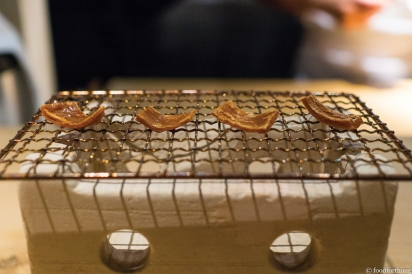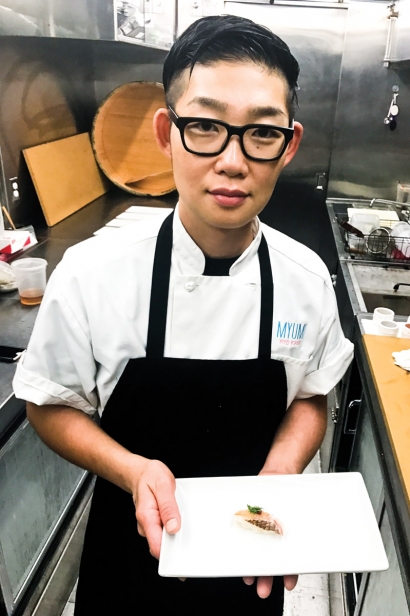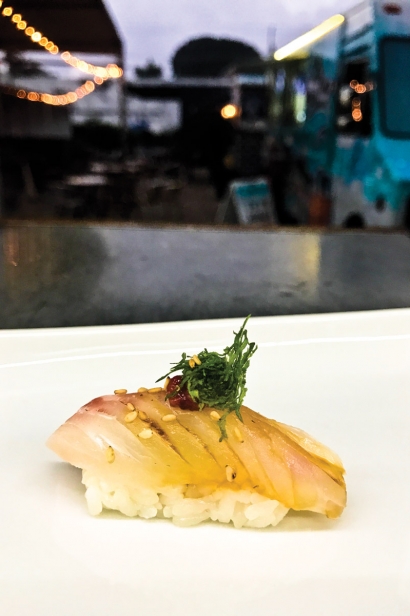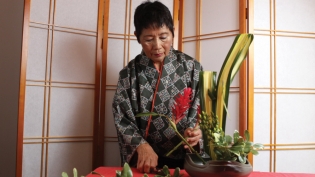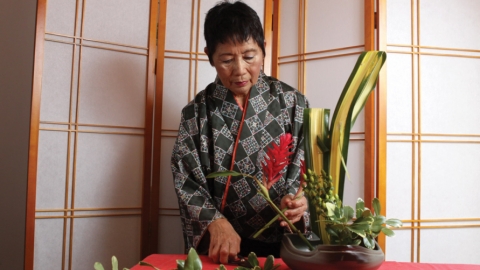Omakase Miami: Flavors of Japan
Miami is not generally thought of as a mecca for Japanese cuisine. But what Miami lacks in depth, it makes up for in quality – if you know where to look, and sometimes, how to ask. Here are three very different places that have one thing in common: they serve some of the best sushi and other Japanese dishes that I’ve had outside of Japan.
NAOE
Eight years ago, a quiet young chef named Kevin Cory opened a tiny place in Sunny Isles Beach called “Naoe.” If all you knew about chef Cory was his immediate prior place of employment – a Thai/sushi combo restaurant called Siam River – you wouldn’t expect much at all. But it turned out that Kevin had spent time apprenticing with his uncle at a ryokan in Japan, a traditional inn that served “kaiseki” cuisine – a multi-course dinner with origins dating back several hundred years to formal tea services. Kaiseki is in one sense very regimented, a defined progression of dishes featuring a multitude of different cooking methods. But with its focus on seasonality and elegant presentations, a kaiseki meal is also open to much variation and improvisation. While in Japan, Cory had also seen first-hand the incredible quality of sushi prepared in Japan, often served in an “omakase” – sometimes translated as “I trust you” or “chef’s choice” – procession. He came back inspired to do something similar here.
In that little 17-seat space in Sunny Isles, Cory created something that was uncannily similar to the intimate sushi dens I encountered in Japan: a spare but elegant, peaceful room, highlighted by a counter of soft blond hinoki cypress in front of an open kitchen. At that counter, Naoe served a bento box that was like a kaiseki crash course: maybe a dozen different bites all prepared in a variety of ways – raw sashimi, simmered seafood, freshly made tofu, crisp fried fish, seasonal local vegetables, a hearty rice dish, a restorative soup – for the almost absurd price of $26. This was then followed by an omakase procession of sushi, priced by the piece until you’d had your fill. It was unlike anything Miami had ever seen.
Over the years, Naoe has evolved in some ways, and stayed very much the same in others. About five years ago it moved to a slightly larger spot on Brickell Key that is nearly a carbon copy of the original. The entrance is still marked only by a business card taped to the glass door. The back of the card still reads “Kevin Cory – executive chef, general manager & dishwasher,” but Kevin now has a few more people helping him prepare the food and serve the diners. The $26 bento box is no more, replaced by a $200 fixed-price dinner that includes the bento, a yakimono course of grilled fish, about a dozen rounds of sushi, and a few dessert courses, many served on beautiful Japanese ceramics.
It is surely one of the most expensive meals in Miami. It is also one of the best. Naoe regularly appears on lists of the top restaurants in the country (and the world). It draws visits from famous chefs like José Andrés and Ferran Adrià when they’re in town, the latter of whom described Naoe as one of the best Japanese restaurants in the world outside of Japan. Those accolades are earned by obsessive attention to ingredient quality, technique and presentation.
A meal at Naoe is simultaneously intensely local and exotically esoteric. On my most recent visit, the kingfish for the sashimi came straight from local fishermen, and most of the fruits and vegetables were from local markets like Robert Is Here. But scallops come from Boston, golden ring octopus from Portugal, and sea urchin from Hokkaido, Japan. For a grilled course, Naoe may serve black-bellied rosefish, caught in 1,000-foot-deep local waters. Then for a round of sushi, you may get kan-buri, the richest, fattiest winter yellowtail sourced from Himi, a port on Japan’s Toyama Bay, which the fish traverse as they migrate toward warmer waters. Over the course of a meal, you experience both the freshness of what’s local in South Florida and the seasonal variations of seafood sourced from Japan.
Part of the magic of a great omakase meal is letting a knowledgeable chef serve what’s best in that particular moment. Another part is trying something you’ve never eaten before and finding out it’s delicious. Looking back on pictures from several meals, I’ve realized that despite the common fixation on toro, or fatty bluefin tuna, as a “luxury” sushi item, I’d never been served it at Naoe. Chef Cory prefers luxuries less heralded here, but regarded as special delicacies in Japan. My last visit featured sea cucumber in two forms: “hochiko,” the ovaries salted and dried, with a chewy jerky-like texture and a concentrated, oceanic flavor; and the even more intense “konoko,” the soft innards salted and pickled. (Note: whenever you’re told something is “good with sake,” expect it to be pretty funky). Or that luxury may be found in the simple perfection of a dead-ripe local fruit like creamy mamey or magenta-hued dragonfruit.
Aside from “omakase,” my Japanese vocabulary is pretty limited. I know “arigato” (thank you) and “oishi” (delicious). While there, I also learned “omotenashi,” loosely defined as the Japanese sense of hospitality. In Japan, it is both ubiquitous and somewhat hard to nail down, a certain selfless grace by which people aim to please guests. But you’ll know exactly what it means when you spend a meal at Naoe in the care of hostess, maitre’d, sake sommelier and menu translator Wendy Maharlika, who is in her way every bit as essential to the experience as chef Cory.
Japan may be 7,500 miles away from Miami, but it feels pretty close when you visit Naoe.
Naoe
661 Brickell Key Dr, Miami
MAKOTO
Superficially, Makoto, in the Bal Harbor Shops, seems almost the antithesis of Naoe. Where Naoe is quiet and austere, Makoto is noisy and vibrates with energy. Where Naoe offers only a fixed omakase service, Makoto has a full a la carte menu which runs from Western-influenced items like the “Japanzanella” (a salad of tofu, tomato, cucumber and crispy rice) to robata-grilled items to ramen bowls to sushi.
But beneath the surface, Makoto is also earnestly dedicated to bringing real Japanese flavors to the table, even when they come with some contemporary tweaks. Born in Japan, chef Makoto Okuwa began his training as a sushi chef at the age of 15, and moved to the U.S. 10 years later. So the tofu in that salad is made in-house, with a silky creaminess that brings a sense of luxury to the humble ingredient. The ramen is prepared as in Makoto’s native Nagoya, “Taiwan style” with ground beef, garlic and bean sprouts in a spicy red chile broth. And the sushi is some of the best you will find anywhere in South Florida.
If you’re serious about sushi, then you probably already know that the place to be is at the sushi bar. And while Makoto doesn’t necessarily style itself as an “omakase” type of place, if it’s not too busy, you can strike up a conversation with the itamae and find out what’s particularly good that evening. It may be the fresh, pink-fleshed kinmedai (goldeneye snapper), or sweet hotate (live scallop), or the intensely oceanic aoyagi (orange clam), or baubles of ikura (salmon roe) cured in soy sauce and sake, or uni (sea urchin) brought in from Santa Barbara or Hokkaido.
Ask, and your curiosity will be rewarded.
Makoto
Bal Harbour Shops 9700 Collins Ave, Bal Harbour
makotorestaurant.me
MYUMI
Myumi is in its way entirely unlike both Naoe and Makoto. In fact, it’s not even a restaurant: it’s a truck, currently camped out in the Wynwood Yard complex that includes several other food trucks, vendors and a charming outdoor bar. The chef behind Myumi is Kazuo Yoshida, who runs 1 or 8, a Japanese restaurant in Brooklyn. He periodically comes down to Miami, but more often it is his disciple Ryo Kato working inside the former mail truck, serving an omakase-only, sushi-only menu to six diners at a time seated at a counter that runs along its side.
I’ll admit I was quite dubious about the idea of food truck sushi; I was also quite pleasantly surprised by Myumi. Because it is omakase-only, and effectively reservation-only due to the limited seating, they know exactly how much they will be serving each evening. As a result, they’re able to source some very high quality fish and seafood.
I’ve had hirame (fluke) with a wonderful, firm snap to its flesh. I’ve had salmon from the Faroe Islands, striated with rich fat. I’ve had plump scallops from Hokkaido, dusted with black salt. And they often serve several variations of my favorite family of fish: hikarimono, or silver-skinned fish, like aji (horse mackerel) chopped with ginger and scallion like a fine tartare, shima aji (striped jack) with a thin layer of red flesh beneath its silver skin, and lightly vinegar-cured kohada (gizzard shad), cut with several slashes to highlight its brilliant silver, black-polka-dotted skin. Some items are served with nothing more than a brush of shoyu. Several others may get less traditional toppings: ume (pickled plum) and shiso leaf, bright-hot yuzu kosho paste, or finely grated cured egg yolk.
While it can be hard to find an omakase meal for less than three figures, at Myumi, the only choice is $60 for eight pieces, or $80 for twelve. The unorthodox setting enables Myumi to offer an omakase experience at a somewhat more accessible price point.
Myumi
Wynwood Yard, 56 NW 29 St., Miami


